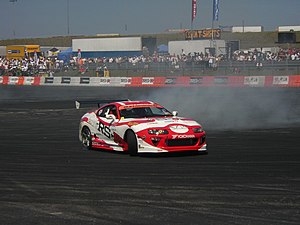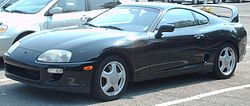
The inspection system is in place to ensure that vehicles on Japanese
roads are properly maintained and are safe to be on the road. Another reason is
to determine if a vehicle has been illegally modified. Illegally modified
vehicles and vehicles deemed unsafe by police will have a red sticker and
the date the vehicle was declared not fit to be on the street. Before a test
can be administered on a vehicle the owner of the vehicle must call up a shaken center and make
an appointment by phone after which the owner must fill out paper work at the
center. The cost for the shaken is
broken up as follows yen1,400 or $18 for paperwork and processing, yen 25,200
$325 for the testing, yen29,780 $380 for 24 months of being valid, yen
8,090 $104 for the Recycling Department with fees being added depending on the
vehicle and its intended use which would be business, personal or
commercial. A typical shaken costs between yen 100,000 $1,285
and yen 200,000. $2,571 If the vehicle is in good condition with no
mechanical problems, the shaken costs about yen 60,000 $770
for small cars includes 2 years of compulsory auto insurance. The
higher costs are for regular automobiles. An initial inspection occurs at
the vehicle's first registration and renewal inspections must then take place
at prescribed intervals thereafter. Personal cars and 2 wheeled
motorcycles have the first shaken last 3 years with every 2 years
requiring a new shaken. Personal light trucks they must have
a shaken done every 2 years. Personal trucks have the
first shaken last 2 years with every year requiring a
new shaken. Business cars require a shaken every
year. Special vehicles require a shaken every 2 years. Vehicles
with engine displacement under 250 cc are exempt and therefore not
required to undergo an inspection. Vehicles are classified by both displacement
and the vehicle size. Cars under 10 years old
may emit not more than 1% carbon monoxide, and not
more than 300ppm unburned
hydrocarbons. Cars older than 10 years may emit up to 4.5% carbon
monoxide and up to 1200ppm unburned hydrocarbons. This emission standard is
laid out in the Japanese
Emission Standard legislation. High flow catalytic converters are allowed. All oxygen sensors must be in working order along with any oil catch tanks.
Exhaust noise is tested at a 45 degree angle, from the tailpipe outlet.
Vehicles up to 10 years old may emit not more than 96 decibels older vehicles are allowed 103 decibels. As vehicles get older, maintaining them to the required
standards can become expensive. Most Japanese do not get involved in mechanical
repairs, and as a result, mechanics can charge high Vehicles which cannot pass
inspection are not permitted on public roads. Unwanted vehicles must be
exported or destroyed and recycled. Japanese used vehicles are exported once
it is no longer cost effective to keep them in service in Japan. Japanese used vehicle exporting is international
trade involving the export of used cars and other vehicles from Japan to other
markets around the world. Despite the high cost of transport, the sale of used
cars and other vehicles to other countries is still profitable due to the
relatively low cost and good condition of the vehicles being purchased.
Contributing factors to the feasibility of such export include Japan's strict motor vehicle inspections and high depreciation which make such vehicles worth very
little in Japan after six years, and strict environmental protection
regulations that make vehicle disposal very expensive in Japan. Japan has very strict vehicle emission test standards. Due to progressively increasing costs of
passing the mandatory periodic vehicle inspection, cars are typically scrapped
or exported for sale abroad by the time they're about 10 years old. Engines
removed from scrapped vehicles are in some cases exported for sale outside of
Japan.



.jpg)




